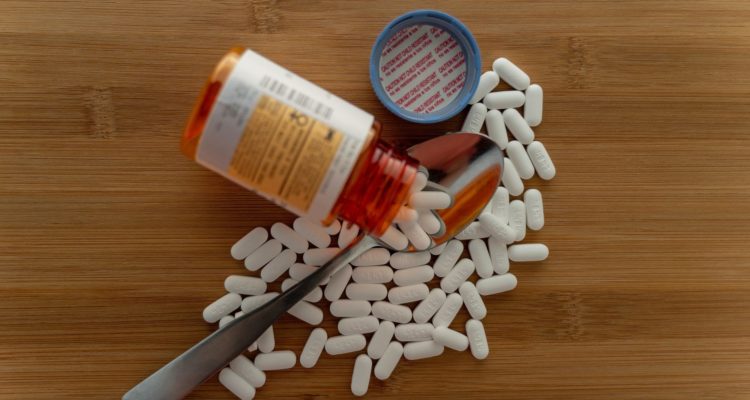
Opioid use in the US has skyrocketed since the late 1990’s. It is estimated that 23% of adults in the US have used opioids in the last 2 years and 10 million people in the US are using an opioid prescription for nonmedical reasons.[i] About 130 people die from opioid overdose in the US daily and a recent study found that 75% of opioid abusers started taking the drugs illegitimately.[ii]
Opioid abuse increases a person’s mortality rate 10-fold mainly due to increase risk of overdose, cardiovascular disease, trauma and infectious diseases like HIV, Hep C and sepsis.[iii]
What causes a person to become addicted?
Genetics has a role in up to 50% and often life circumstances like severe trauma, adverse childhood events and mental illness are linked to the addiction. However, opioids are powerful drugs and most addicts do not suffer a mental illness or have a strong genetic propensity. Often abusers suffer depression and anxiety as a symptom of their addiction, and in most cases the mental illness resolves shortly after initiating treatment.
Rural areas and women have higher rates of addiction, but no population subset or social class is spared the affliction either directedly or indirectly.[iv]
What are opioids?
Opioids (or “narcotics”) are derived from the opium poppy plant directly like morphine and codeine, made semi-synthetically like heroin, oxycodone and hydrocodone, or manufactured synthetically like fentanyl. They are used for both their medicinal and recreational properties including killing pain, treating cough and inducing euphoria. Codeine is a weak opioid about 1/10 as strong as morphine for pain. Hydrocodone and oxycodone are strong painkillers and fentanyl is very powerful at about 100 times the potency of morphine. They can all induce euphoria — the desired recreational effect.
Why were they so rapidly adopted?
Pain is common and between 1991 and 2016 opioid painkiller prescriptions rose from 76 million to 289 million in the US.[v] 20% of the US population live with chronic pain and in 8% the pain is severe enough to limit at least one major life activity. Opioid medications are very useful for treating pain: They work, are inexpensive and readily available with a prescription.
In the last few decades doctors quickly looked to this pain killing solution pushed by the pharmaceutical companies, joint health commissions and health insurers. The pharmaceutical industry portrayed them as less addictive than they really were. Joint commissions found that opioids improve pain control, increase function and make patients more active. Health insurers like them because they were cheaper than alternative pain therapies. And patients appreciated the relief of pain and the convenience of use.
Opioid dependence versus addiction?
Opioid dependence is a physical condition that is expressed by tolerance and withdraw. Both occur with repeated use as the brain “adapts” to the opioid in the system. Tolerance is needing higher doses to get the same effect and withdrawal is characterized by unpleasant symptoms that occur with stopping the opioid abruptly. Withdrawal can last days to a few weeks. Dependence occurs due to changes in brain areas different from addiction and thus dependence can happen without an addiction.
Opioid addiction, known medically as opioid use disorder, is related to behavior changes that occur with repeated use like craving, seeking and poor judgement with decreased insight which interfere with work, social and family obligations. It develops due to changes in the brain’s reward system and prefrontal cortex where conscious thought occurs.
These changes are both positive reinforcing leading to craving and seeking to relieve a strengthening desire and negative reinforcing caused by increasing feelings of anxiety and fear when the opioid is not present in the system. These positive and negative reinforcements with the maladaptive judgement changes in the cortex lead to escalating risky behavior to satisfy the desire (positive) and relieve the distress (negative) makes chronic opioid use so dangerous and difficult to stop. It is a powerful and self-reinforcing compulsion to use.
Why detox alone is not enough to treat addiction?
Opioid dependence symptom of withdrawal will resolve in a few days to a week but the maladaptive brain changes of addiction are much more permanent. Thus, when a person with addiction is detoxed for 72 hours and goes through withdrawal the positive and negative reinforcements and cognitive changes still exist. Thus, the vast majority of opioid abusers do not maintain abstinence for more than a few weeks after undergoing detoxification.
How is addiction treated?
Addiction treatment is highly successful, but it needs to be a long-term therapy. It can help addicts maintain abstinence, lower their mortality rates and return to a more normal life. Medication-assisted treatment (MAT) is a supervised program involving medication and counseling from a MAT trained physician. Treatment usually involves medications like suboxone, methadone or naltrexone as part of a comprehensive long-term therapy. It may also involve referrals to other specialist such as behavior counsellors, pain specialists, psychiatrists and/or treatment for underlying conditions like depression appropriate pharmacotherapy. Cycles of relapse and remission often occur during treatment, so a strong doctor-patient relationship is highly desirable to maximize success rates. For many, MAT may represent the only path to a normal life again.
Dr. Beadling was trained to treat opioid abuse disorder and has a waiver certification for MAT.
Main Sources:
- DIANA COFFA, MD, and HANNAH SNYDER, MD, University of California–San Francisco, San Francisco General Hospital, San Francisco, California Am Fam Physician. 2019 Oct 1;100(7):416-425.
- Waiver Training course sponsored by the American Academy of Addiction Psychiatry
- Provider Clinical Support System (PCSS) sponsored by the Substance Abuse and Mental Health Services Administration (SAMHSA)
Additional Sources:
- [i] https://www.statista.com/topics/3197/opioid-use-in-the-us
- [ii] Pergolizzi JV, LeQuang JA, Taylor R, Raffa RB (January 2018). “Going beyond prescription pain relievers to understand the opioid epidemic: the role of illicit fentanyl, new psychoactive substances, and street heroin”. Postgraduate Medicine. 13 0 (1): 1–8. doi:10.1080/00325481.2018.1407618. PMID 29190175
- [iii] DIANA COFFA, MD, and HANNAH SNYDER, MD, University of California–San Francisco, San Francisco General Hospital, San Francisco, California
- Am Fam Physician. 2019 Oct 1;100(7):416-425.
- [iv] Waiver Training course sponsored by the American Academy of Addiction Psychiatry
- [v] Abelson, Jenn; Williams, Aaron; Ba Tran, Andrew; Kornfield, Meryl (November 7, 2019). “At height of crisis, Walgreens handled nearly one in five of the most addictive opioids”. Washington Post. Retrieved November 7, 2019.

